Paradise fish - Macropodus opercularis
Scientific name: Macropodus opercularis
Common name: Paradise fish
Family: Osphronemidae
Usual size in fish tanks: 9 - 10 cm (3.54 - 3.94 inch)
014
Recommended pH range: 6.8 - 8
Recommended water hardness: 4 - 18°N (71.43 - 321.43ppm)
0°C 32°F30°C 86°F
Recommended temperature range: 16 - 26 °C (60.8 - 78.8°F)
The way how these fish reproduce: Spawning
Where the species comes from: East Asia
Temperament to its own species: peaceful
Temperament toward other fish species: aggressive to smaller
Usual place in the tank: Top levels
Origin
Macropodus opercularis, commonly known as the Paradise Fish, is native to the freshwater streams, ponds, and rice paddies of East Asia, specifically China, Taiwan, Vietnam, and the Korean Peninsula. These habitats are characterized by still or slow-moving waters with abundant vegetation, providing ample cover and breeding grounds. Paradise Fish have adapted to various water conditions, including cooler temperatures and variable water chemistry, making them one of the hardiest species in the aquarium trade.
Appearance
Paradise Fish are known for their vibrant coloration and elegant finnage. They typically reach a size of 9-10 cm (3.54-3.94 inches) in home aquariums. Males are particularly striking, displaying a range of colors from blue and red to green, often with contrasting horizontal stripes and long, flowing fins. Females are generally less colorful, with shorter fins and a more subdued color palette. The species has a laterally compressed body and elongated dorsal and anal fins, which enhance their graceful swimming movements. Both sexes possess a pair of modified pectoral fins, known as "paradise fins," which they use for communication and courtship displays.
Feeding and Diet
Paradise Fish are omnivores with a preference for protein-rich foods. In the aquarium, they thrive on a varied diet that includes high-quality flakes or pellets, supplemented with live or frozen foods such as bloodworms, brine shrimp, and daphnia. They also enjoy small insects and larvae, which mimic their natural diet in the wild. To maintain their vibrant coloration and overall health, offer these protein-rich foods 2-3 times a week.
In addition to protein, Paradise Fish benefit from plant-based foods. Including spirulina flakes, blanched spinach, or zucchini in their diet provides essential nutrients and helps ensure proper digestion. This balanced diet will support their immune system, enhance their coloration, and encourage natural behaviors like foraging and hunting.
Tank Setup and Environment
To create a suitable environment for Paradise Fish, set up an aquarium with plenty of plants, both rooted and floating, to provide cover and breeding sites. A tank of at least 80 liters (20 gallons) is recommended for a pair or a small group, with larger tanks needed if housing multiple males due to their territorial nature. The tank should include areas of still water and moderate lighting to mimic their natural habitat.
Paradise Fish are labyrinth fish, meaning they can breathe atmospheric air. Therefore, they do not require strong aeration or water movement. However, good filtration is still necessary to maintain water quality. They can tolerate a wide range of water parameters, with a recommended pH range of 6.8-8 and water hardness (dGH) of 4-18°N (71.43-321.43 ppm). The temperature should be maintained between 16-26 °C (60.8-78.8°F), making them suitable for unheated aquariums in temperate climates.
If live plants are included in the tank, choose hardy species like Java Fern and Anubias, as Paradise Fish are known to dig and rearrange the substrate. Floating plants like duckweed can also be added to diffuse lighting and create a more natural setting, offering the fish shaded areas and cover for their bubble nests during breeding.
Behavior and Compatibility
Paradise Fish are known for their intelligence and sometimes aggressive behavior, particularly toward smaller or similarly colored fish. While they are generally peaceful with larger tank mates, they can exhibit territorial behavior, especially when kept in smaller tanks or during breeding. They are best kept with other robust, non-aggressive species such as larger tetras, barbs, or loaches. Avoid keeping them with small fish like guppies, as Paradise Fish may prey on them, particularly if the smaller fish have long, flowing fins that attract attention.
When young, Paradise Fish often swim together peacefully, but as they mature, they become more territorial. Males, in particular, will establish and defend their territories, sometimes displaying aggression toward other males. To minimize conflicts, provide plenty of hiding spots and visual barriers within the tank, allowing each fish to claim its own space.
Sexing
Sexing Paradise Fish is relatively straightforward. Males are more vibrantly colored and have longer, more elaborate fins compared to females. During the breeding season, males will intensify in color and display more aggressive courtship behaviors. Females are usually smaller, with a more rounded body shape, especially when carrying eggs.
Breeding
Breeding Paradise Fish is similar to breeding Gouramis, as they are bubble nest builders. The male constructs a bubble nest at the water's surface, often among floating plants. Once the nest is complete, the male will court the female, displaying vibrant colors and spreading his fins. The female lays 50-200 eggs, which the male fertilizes and collects in the bubble nest. After spawning, the male becomes highly protective of the nest and may become aggressive toward the female. Therefore, it is advisable to remove the female after spawning to prevent injury.
The eggs hatch within 24-48 hours, and the fry become free-swimming after 3-5 days. The male will continue to guard the nest until the fry are independent. At this stage, they can be fed on infusoria or newly hatched brine shrimp. Maintaining stable water conditions and providing plenty of cover for the fry will enhance their survival rates.
Lifespan
The expected lifespan of Macropodus opercularis is 5-7 years in captivity, though with optimal care, they can live longer. Regular water changes, a balanced diet, and a stress-free environment are key factors in ensuring they reach their full lifespan.
Short Description
The Paradise Fish (Macropodus opercularis) is a hardy, vibrantly colored labyrinth fish known for its striking appearance and territorial behavior. Native to East Asia, they thrive in aquariums that offer plenty of vegetation and hiding spots. While they can be aggressive toward smaller or similarly sized fish, they make a fascinating addition to a community tank when housed with compatible species. Their intriguing breeding behavior and adaptability to a range of water conditions make them a rewarding species for both beginner and experienced aquarists.
Picture has been provided by Elektra.
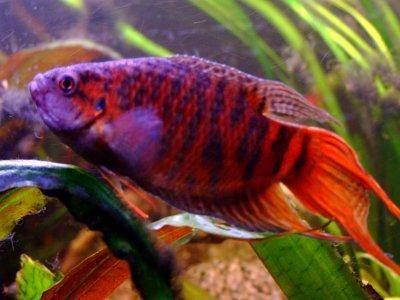
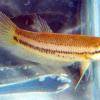 Akar
Akar 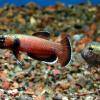 Whiteseam
Whiteseam 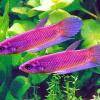 Giant
Giant 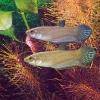 Betta
Betta 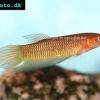 Slender
Slender 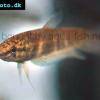 Betta
Betta 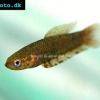 Brown’s
Brown’s 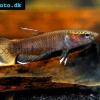 Snakehead
Snakehead 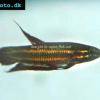 Wine
Wine 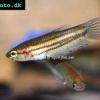 Edith’s
Edith’s 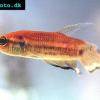 Blue
Blue 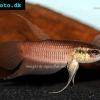 Betta
Betta  Peaceful
Peaceful 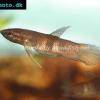 Kapaus
Kapaus 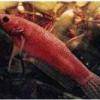 Eyespot
Eyespot 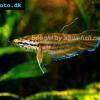 Spotted
Spotted 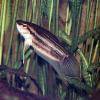 Forest
Forest 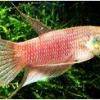 Schaller’s
Schaller’s 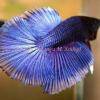 Siamese
Siamese 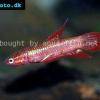 Chukai
Chukai 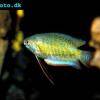 Banded
Banded  Dwarf
Dwarf 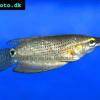 Frail
Frail 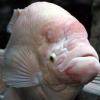 Giant
Giant 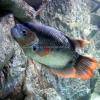 Giant
Giant 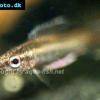 Licorice
Licorice 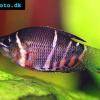 Chocolate
Chocolate 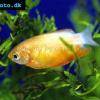 Honey
Honey 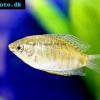 Thick
Thick 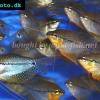 Pearl
Pearl 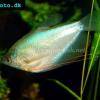 Moonlight
Moonlight 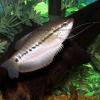 Snakeskin
Snakeskin 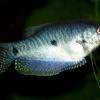 Blue
Blue